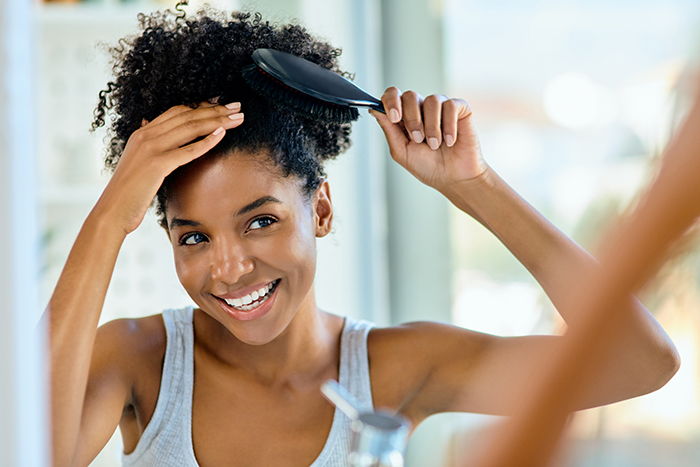Hairstyles have always been more than just a way to look good. Across the world, hair is a symbol of identity, culture, creativity, and confidence. The way people style their hair tells a story—whether it’s about tradition, personal taste, or even social status. From ancient braids to modern fades, hairstyles continue to play a central role in fashion and self-expression.
This article explores the history, cultural importance, popular trends, and the personal impact of hairstyles in society today.
The Cultural Significance of Hairstyles
Hair has deep cultural meaning in many communities. In Africa, hairstyles have always carried symbolic power. For example, braiding traditions date back thousands of years and were used to signify age, tribe, marital status, wealth, and spirituality. Cornrows, Bantu knots, dreadlocks, and Afros are more than just styles; they represent heritage and pride.
In Asia, long hair has often symbolized femininity and strength, while in Native American cultures, hair is considered sacred and a reflection of spiritual life. Even in modern times, hairstyles remain tied to identity. For instance, cutting or growing hair can mark a rite of passage, rebellion, or a new beginning.
Hairstyles as a Form of Self-Expression
Just like clothing, hair is a personal canvas. People use hairstyles to express mood, creativity, and personality. A bold color like red or blue may show confidence, while a neat bun or fade might suggest professionalism.
Young people especially use hairstyles to stand out and create trends. For some, a hairstyle is a fashion statement; for others, it’s a declaration of independence. Musicians, athletes, and celebrities often influence these trends, inspiring millions to try something new with their hair.
Popular Hairstyle Trends
1. Braids and Protective Styles
Braids remain one of the most versatile and practical hairstyles, especially in African and diaspora communities. Styles like cornrows, box braids, Ghana braids, and twists not only look stylish but also protect natural hair from breakage.
2. Natural Hair Movement
Many people are embracing their natural textures instead of chemically straightening their hair. The natural hair movement promotes pride, health, and self-acceptance. Styles like Afros, twist-outs, and wash-and-go looks are celebrated worldwide.
3. Short and Bold Cuts
Pixie cuts, fades, and undercuts are gaining popularity among both men and women. These styles are low-maintenance yet chic, often symbolizing confidence and strength.
4. Color Trends
Hair dyeing has become an art form. From subtle highlights to bold neon colors, people use hair color to express personality. Ombre and balayage techniques are especially popular for adding dimension and flair.
5. Men’s Styles
For men, the fade, undercut, and dreadlocks remain top choices. Beards paired with stylish haircuts also dominate fashion scenes, creating a complete look.
The Business of Hairstyles
Hairstyling is not only an art but also a booming business. Salons and barbershops are vital social spaces where people connect, share stories, and build community. The global hair care and styling industry is worth billions of dollars, with products ranging from shampoos to wigs, extensions, and styling tools.
In Africa and among the diaspora, hairstyling has also become an entrepreneurial opportunity. Many young stylists are using their skills to earn income, gain independence, and create fashion trends.
Hairstyles and Confidence
The way a person feels about their hair often affects their self-esteem. A good hairstyle can boost confidence, while a “bad hair day” may lower it. This is why people spend time and money to keep their hair looking neat and fashionable.
Psychologists even note that a new hairstyle often marks a fresh chapter in life. After difficult experiences, many people cut or restyle their hair as a sign of renewal and empowerment.
The Challenges of Hairstyling
Despite the beauty of hairstyles, challenges exist. Some people face workplace discrimination for wearing natural or cultural styles. For instance, dreadlocks or Afros have sometimes been unfairly judged as “unprofessional.” This has sparked global debates about cultural acceptance and hair freedom.
Additionally, frequent chemical treatments, tight braids, or heat styling can damage hair. Many people are now learning to balance fashion with hair health by using protective products, reducing heat, and embracing natural textures.
The Future of Hairstyles
Hairstyles will always evolve with time, but one thing is clear: individuality will remain at the heart of hair fashion. Technology is also influencing hairstyling. From 3D-printed wigs to apps that let you “try on” hairstyles virtually, the future is becoming more creative.
Sustainability is another focus. Eco-friendly hair products and natural dyes are gaining popularity as people become more conscious of the environment.
Conclusion
Hairstyles are far more than strands of hair arranged on the head. They are culture, identity, confidence, and art. From braids that tell ancestral stories to modern cuts that reflect personal style, hair is an essential part of self-expression.
Whether traditional or trendy, simple or bold, every hairstyle carries meaning. It is a powerful reminder that beauty is not just about appearance but also about heritage, creativity, and confidence. By embracing the diversity of hairstyles, we celebrate not only fashion but also the uniqueness of every individual.


Comments (0)